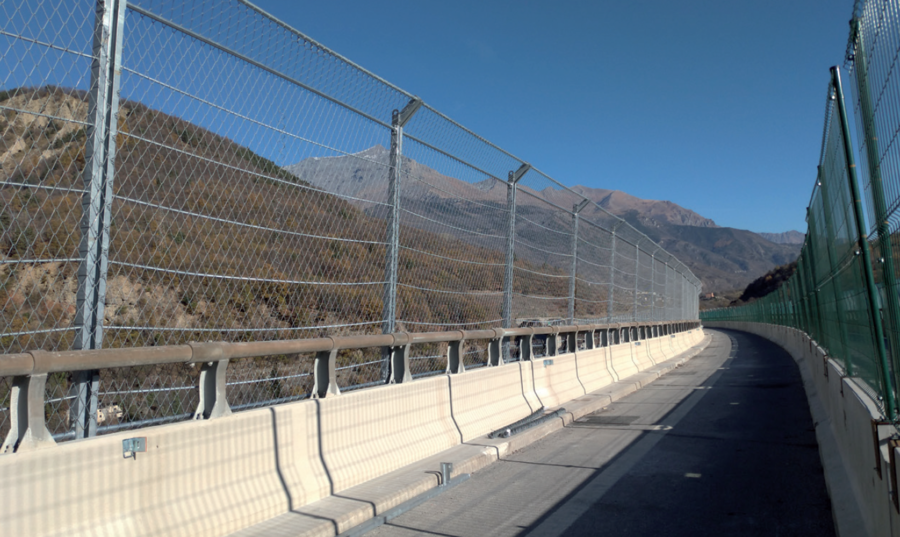From rockfall protection kits to avalanche prevention structures or protection from landslides and mudflows on torrents, up to a line of metal debris flow barriers; all these solutions are characterised by the highest safety standards deployed in industry, construction and even in motor sport competitions. This is the technological path that characterises Geobrugg, an engineering specialist at the service of territorial safety. Among the devices developed by its “laboratory” are the barriers approved by the FIA (International Automobile Federation) to protect commissioners and spectators at Formula 1 circuits or other motorsport categories, from Italy (Mugello, Imola, Balocco) to the USA. Or else in “technical gyms” where the Swiss company has been able to test the best solutions that are always perfectly suited to the latest and most stringent regulatory standards.
The utmost safety on the (large) work site
Switching from sport to transport infrastructure, a technical story deserves to be put in the spotlight. This is the story in which the know-how put in place is driven by the same principles of quality research, and which brings us into close contact with a “Formula 1” building site. We are on the slab of the Clarea Viaduct, in the Susa Valley, a “belvedere” of the A32 Turin-Bardonecchia highway managed by Sitaf, which overlooks the NLTL construction site, the New Turin-Lyon Line, the owner of the Italian-French company TELT Tunnel Euralpin Lyon Turin. Here, to protect those who work on the construction site, the Geobrugg DF-380 barrier, tested in compliance with FIA regulations, is being installed. The first phase of installation of the device was completed in November, the second and final phase is scheduled for next spring.

New debris flow barrier
Between the highway of today and the railway of tomorrow, a priority was and is precisely to ensure the highest possible protection for both users in transit and workers. From here, the territorial authorities, starting with the Prefecture of Turin, have been encouraged to install certified protection measures on the side of the highway, with the aim of preventing the effects of a voluntary or accidental fall of objects from the highway itself.
The designers of the project - namely the architect Corrado Giovannetti, from Musinet Engineering (who is responsible for the design and supervision of the work; responsible for the procedure is engineer Federico Sandretti from Sitaf), assisted by engineer Nicola Mordà - found the most suitable solution for the purpose in Geobrugg’s FIA certified barriers. In addition, since the required protection standards were even stricter than those guaranteed by the available products, Geobrugg’s specialists developed an even more performing, full-scale tested solution at the DTC (Dynamic Test Center) test site in Biel, Switzerland.
The result: the enhanced barrier has proven to be able to pass the most arduous tests required by the FIA certification regulations. As mentioned above, the first part of the laying, which concerned the external sides of the two parallel highway viaducts, began in the second half of November, as soon as the bridge restoration works were completed, and was completed at the beginning of December. Once the winter season is over, the supply and installation of the debris flow barriers along the overtaking lanes in both directions will begin, so as to put the railway tunnel construction site definitively in (maximum) safety.